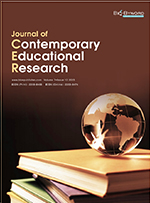Abstract
With the rapid development of modern society, the protection and inheritance of traditional culture are becoming increasingly important. As a part of Chinese traditional culture, Tongyu New Year’s Paintings, with their unique artistic style and rich cultural connotation, have become an excellent resource for exploring the beauty of tradition and inspiring creativity. Based on this, LH Kindergarten in Baicheng City, Jilin Province, has utilized Tongyu New Year’s Paintings as a curriculum resource to develop a school-based curriculum, “The Beauty of Tongyu New Year’s Paintings: Artistic Exploration for Teachers and Children.” Through diversified learning styles, teachers and children will learn about the history of New Year’s paintings, incorporate certain features of the paintings into their art activities, and cultivate creativity and the spirit of teamwork, so as to pass on the precious essence of traditional culture to children and carry forward the spirit of teamwork in their hearts. This program will lead children to experience the treasures of traditional culture and the rich connotations behind Chinese New Year’s paintings, laying a solid foundation for their growth and lifelong learning.
References
He P, 2018, Analysis of the Zeitgeist of Tongyu New Year’s Painting Art. Journal of Jilin Engineering Normal University, 34(8): 65–67.
Chen J, 2020, The Social Function of Tongyu New Year’s Paintings. The Silk Road Vision, 2020(19): 126.
Chen J, 2020, Folklore Implications of Tongyu New Year’s Paintings. The Silk Road Vision, 2020(13): 31.
Liu C, Fang A, 2017, Exploring the Cultural Value of Tongyu New Year’s Paintings. Journal of Beihua University (Social Science Edition), 18(2): 40–44.
